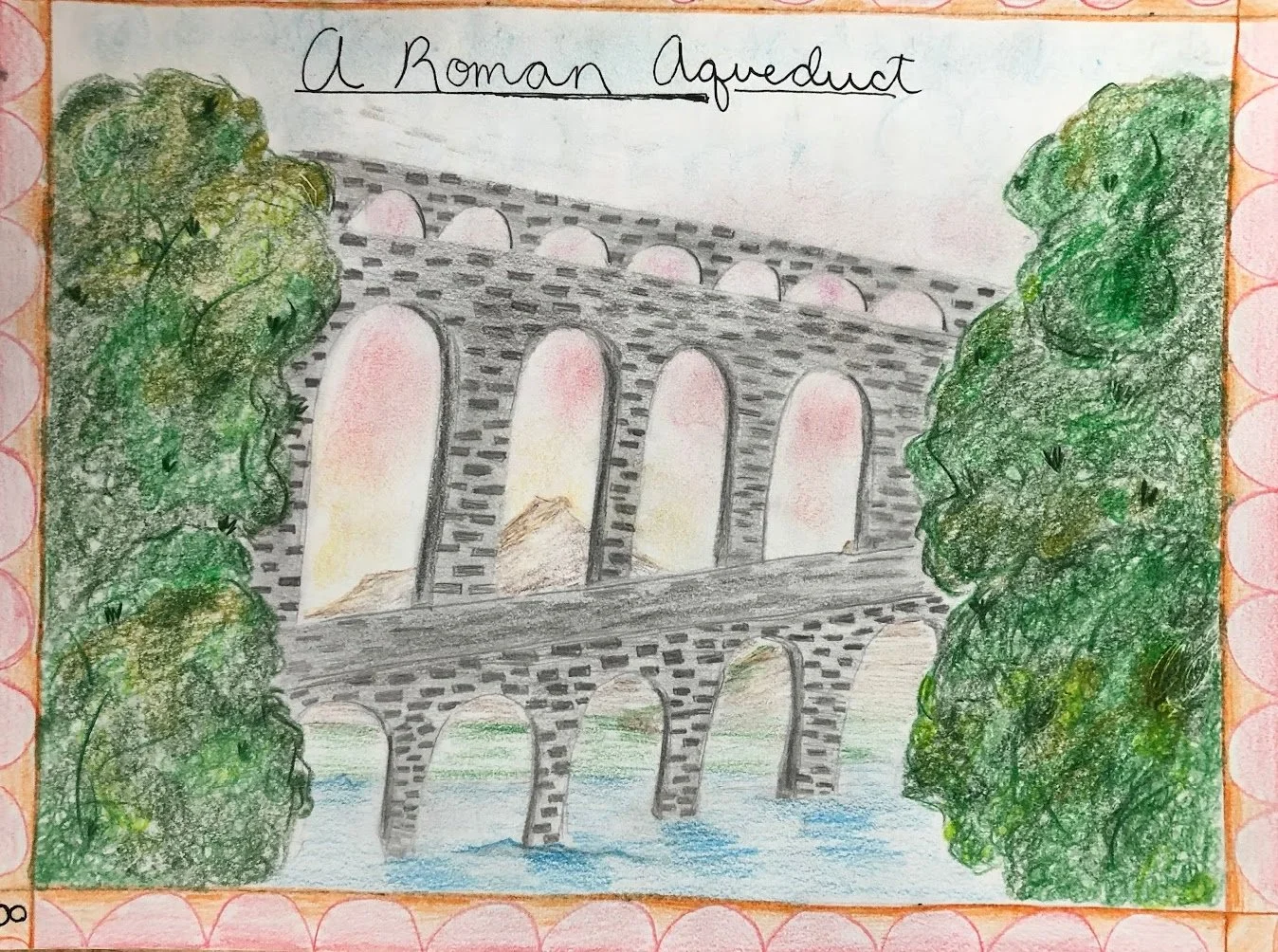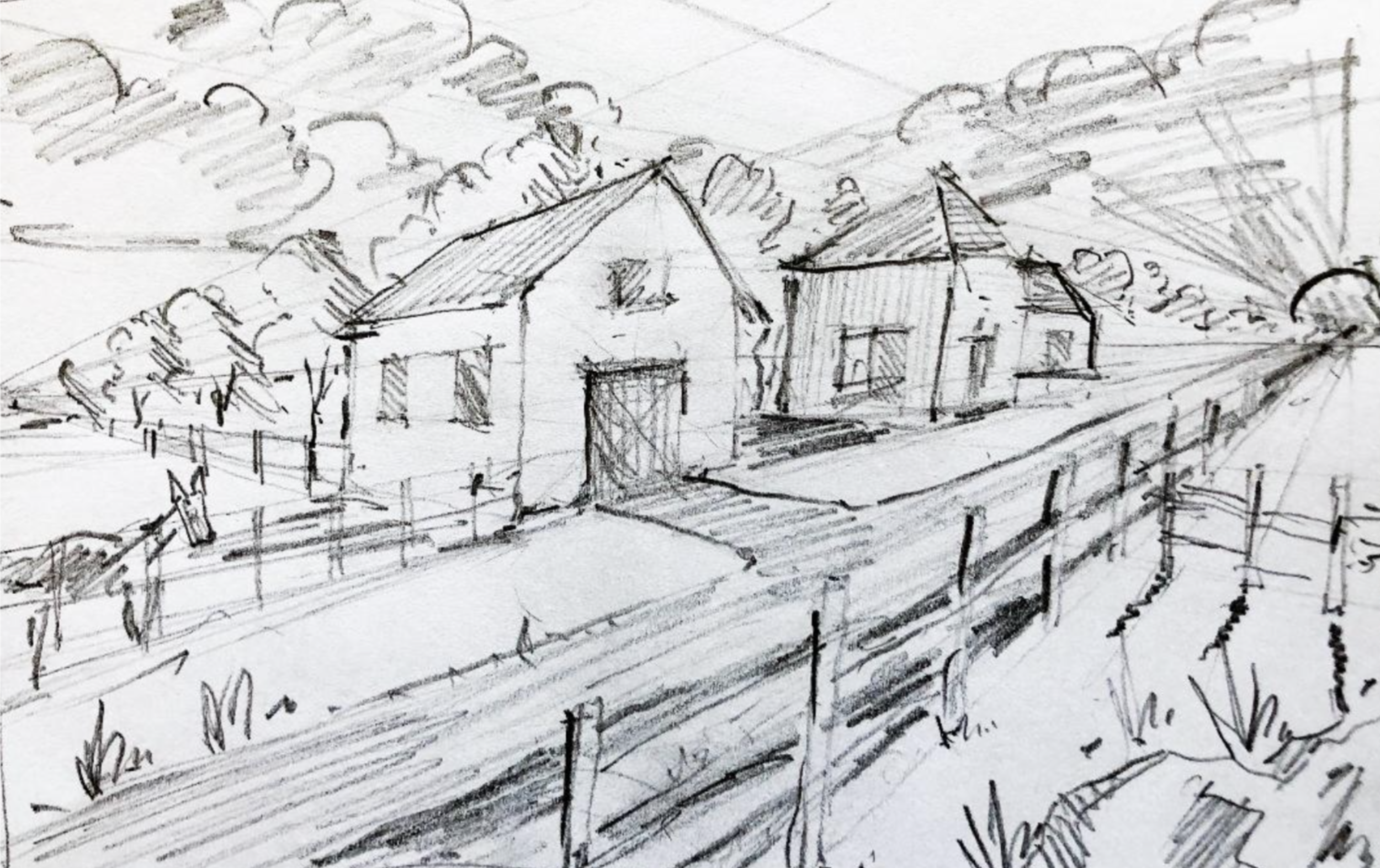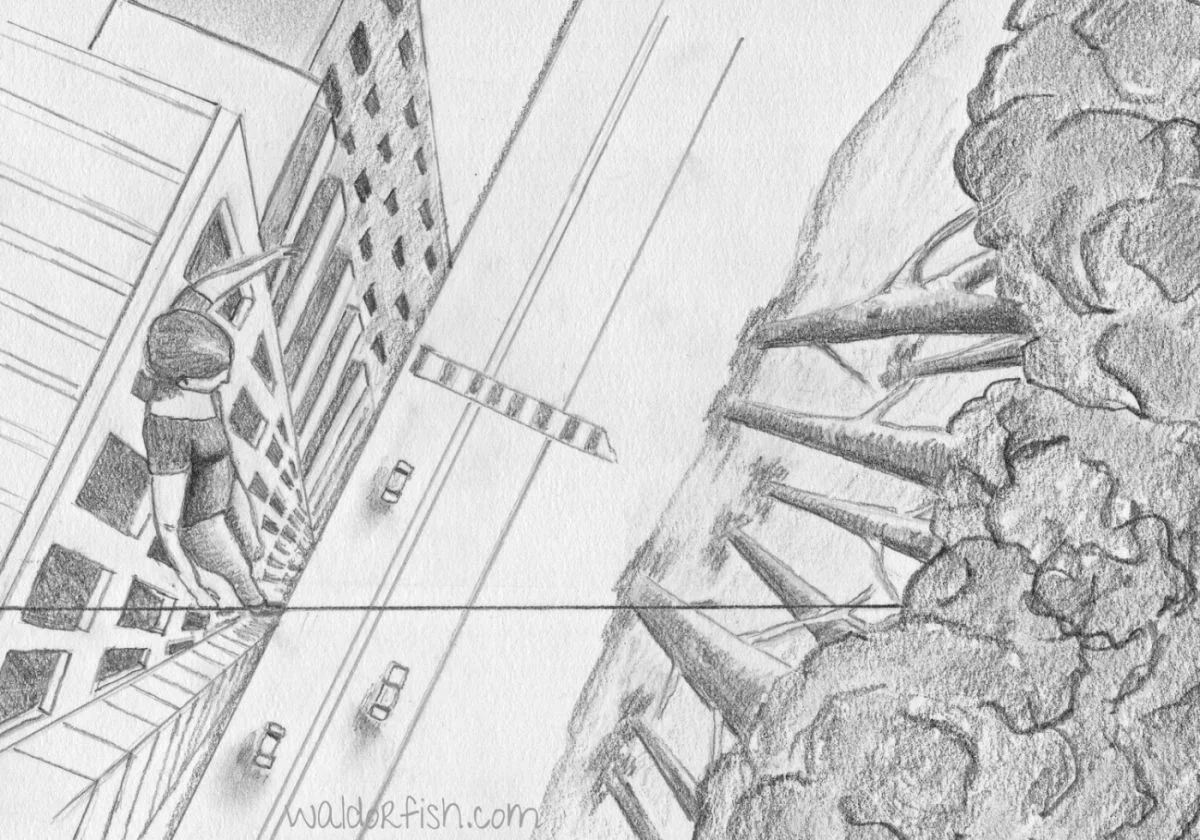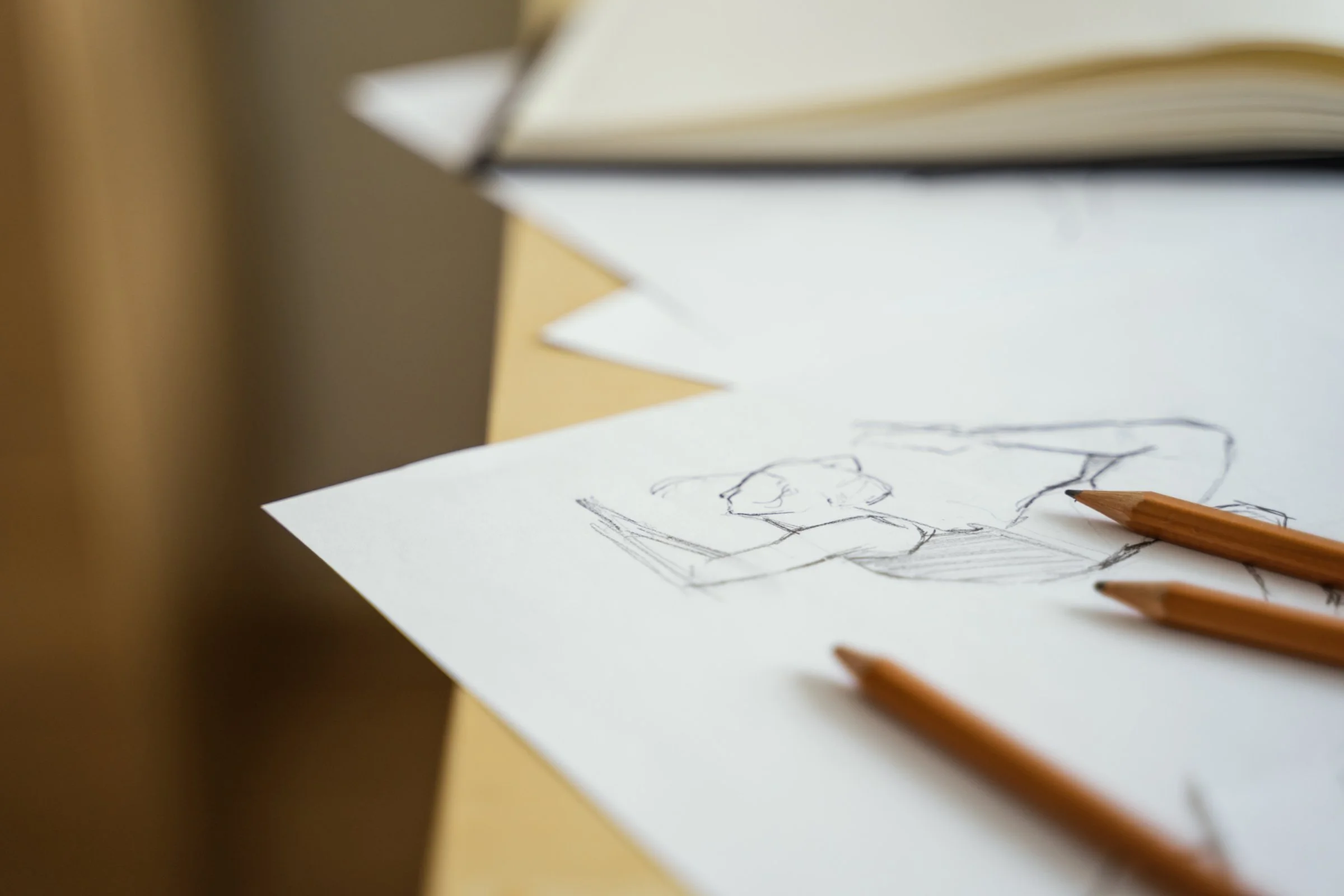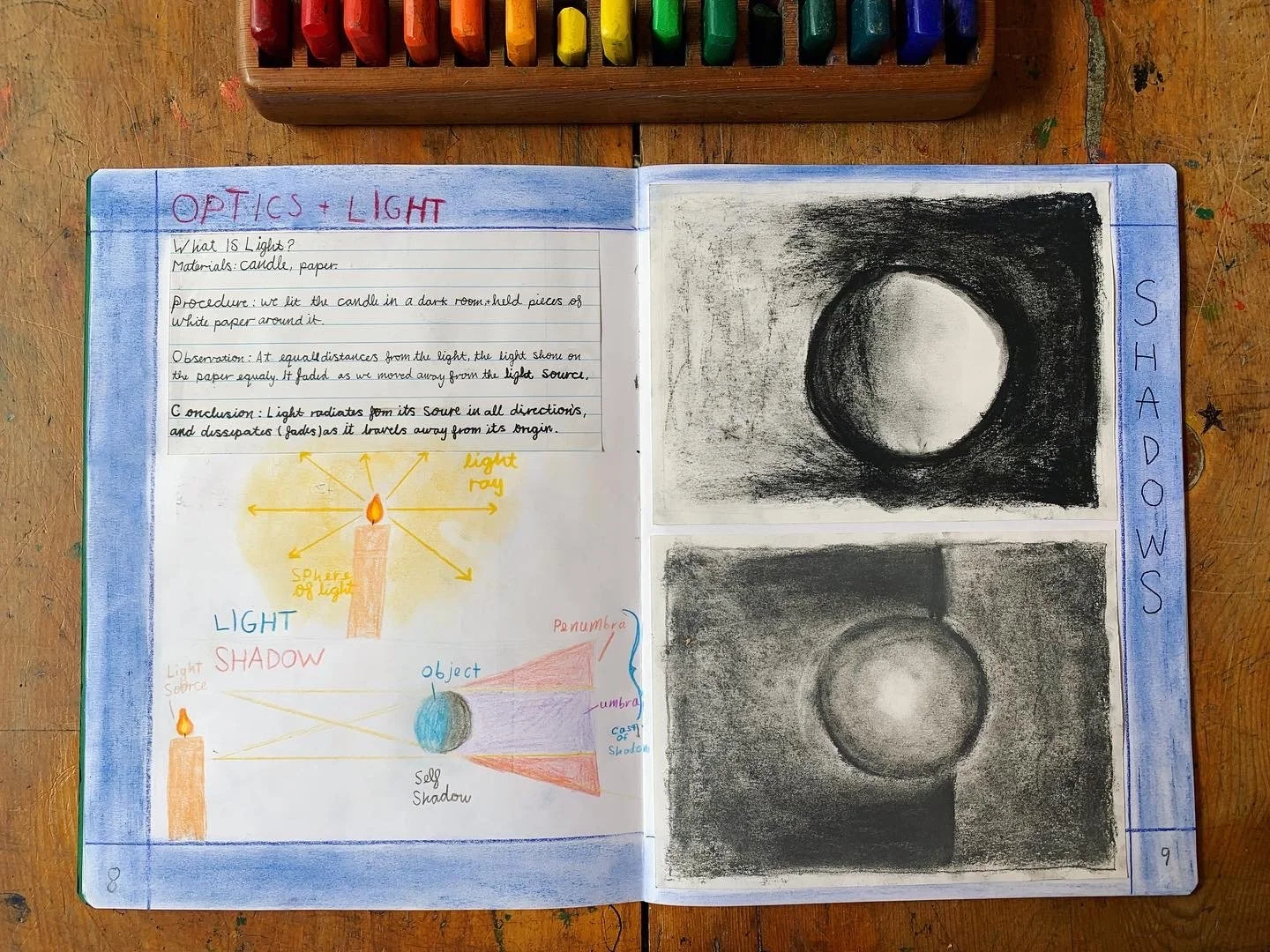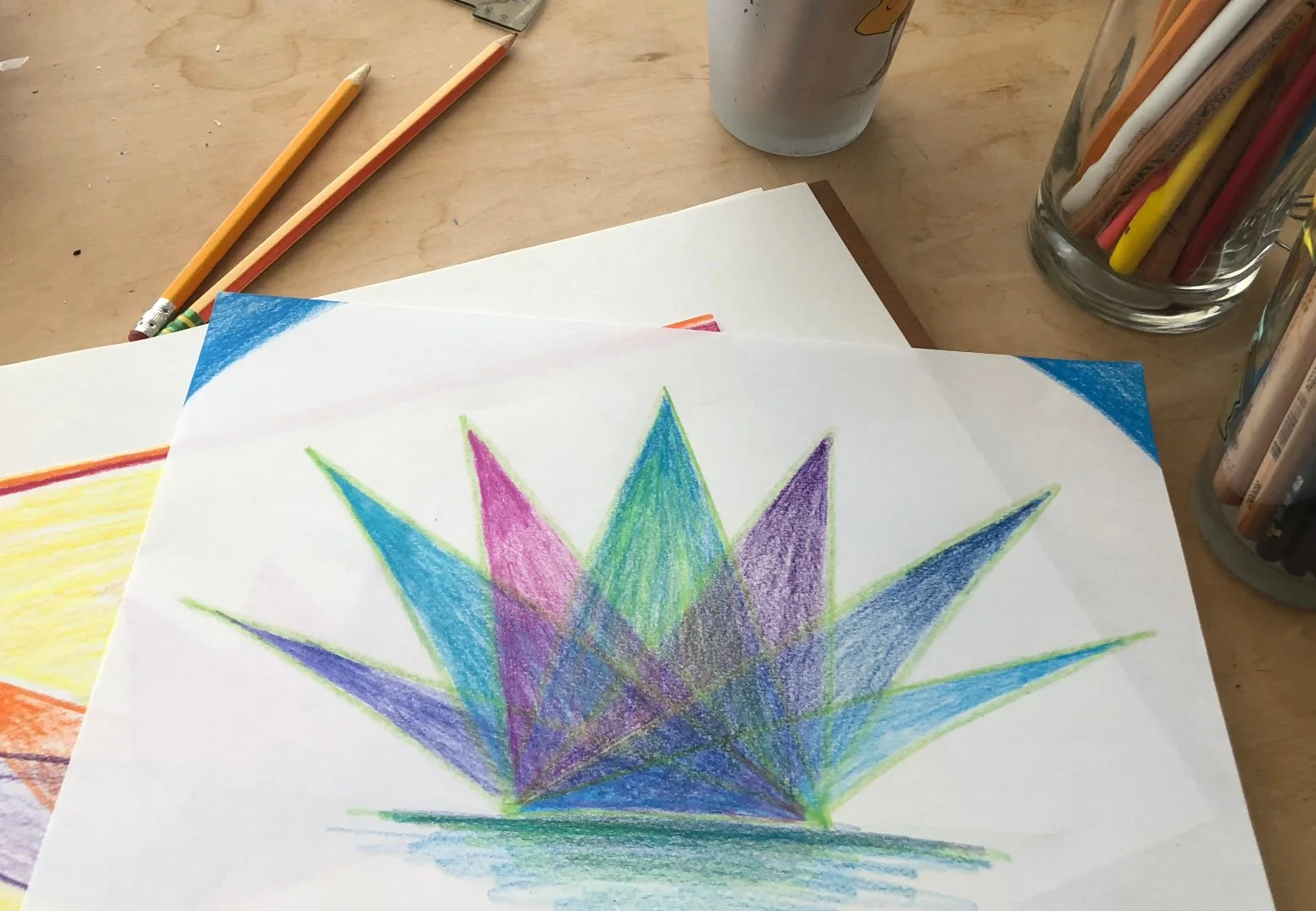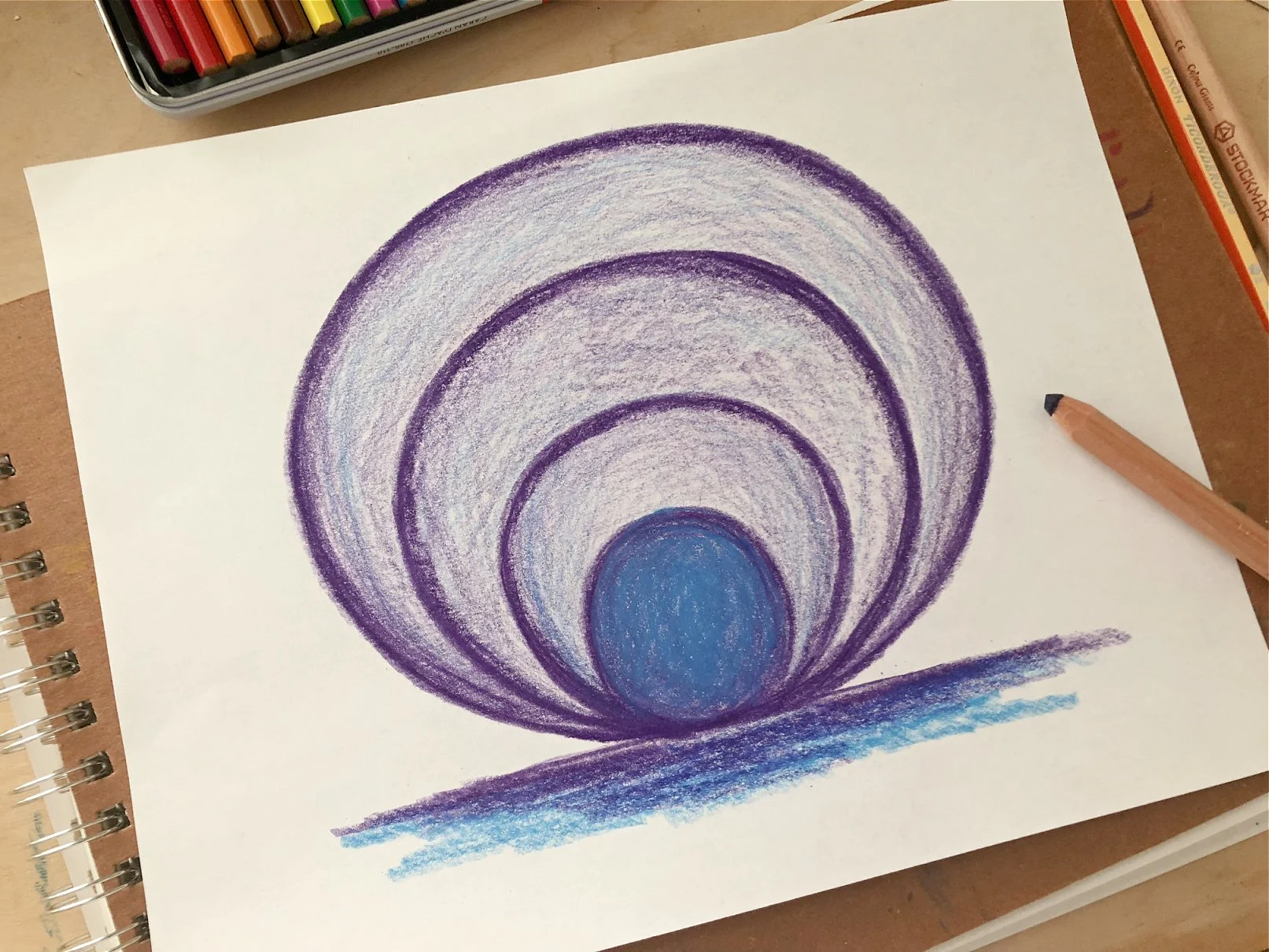
Waldorfish Blog
Waldorf Art: How is Art Incorporated into the Waldorf Middle Grades, 5-8?
Q: How is art incorporated into the Waldorf middle grades, 5 through 8?
(This post is part of a series in which we answer the most common questions we receive in our inbox re: homeschooling, Waldorf curriculum/pedagogy, and whatever else comes our way! Click here to read more from the series!)
A: Art is woven into every aspect of the Waldorf upper grades curriculum, no matter the subject!
(And just so we’re all on the same page, we’re using ‘middle grades’ and ‘upper grades’ interchangeably to refer to the grades 5-8.)
Whether in history, science, or math, the upper grades student is continuously learning through artistic skills and expression.
It is common in today’s world to think of art as its own stand-alone subject; many students experience “art class” where there is a specific time in a student’s school day for art, and otherwise, they are focusing on non-art subjects like math or science.
A pencil drawing from a sixth grader’s main lesson book- Roman history coming to life!
But in Waldorf education, art is naturally incorporated into each subject- it is not a separate subject, it is the mechanism used to explore, study, and understand everything!
So, what does this art curriculum really look like in the upper grades?
For example, in seventh grade, students explore the Renaissance and all the discoveries, inventions and artistic movements that arose from that time. Instead of just listening to the biographies of great artists such as Michaelanglo, Raphael, or da Vinci, the students will copy their works of art in detail: a masterclass in figure drawing! Though history may be the focus, students engage with the curriculum through their own artistic endeavors.
The skills built through seventh grade figure drawing lead directly into the next grade’s curriculum. In eighth grade, students explore the human body in an Anatomy block. They will learn about muscles, the nervous system, how various organs function, and much more. Skills in figure drawing will grow all the more through this block; drawing a human hand with the knowledge of its skeletal and muscular structure creates a deeper connection to the beauty and function of the human body. It’s artistic work supporting scientific study!
As well, the upper grade student studies Physics from sixth through eighth grade, which includes exploring light and all its properties. The perfect art medium to deepen one’s study of light is charcoal. Drawing with charcoal encourages a student to really observe light and how it travels, reflects, bounces, and highlights an object, and how the lack of light creates shadow and depth. Drawing light and darkness in an accurate, beautiful way requires the understanding of light itself- once again, art and science working as one!
Stunning charcoal drawings from a seventh grade Waldorf classroom- we especially love how each has their own style and personality.
The actual outcome of the final piece of art is of secondary importance to the process of creating and exploring connections. The act of creating the art is a process which supports their learning.
Truly, art is woven throughout the upper grades; here are some examples:
Pencil Drawings- Found in geometry forms, nature sketching, physiology and anatomy diagrams, mathematical proof work, astronomy observational notes and more! Pencil drawings are also the predominant art medium used in creating main lesson books.
Perspective Drawing- A skill learned most often in seventh grade, sometimes in its own short block. The process of perspective drawing to show depth and distance is used in studying the Renaissance, architecture, geological landscapes, astronomy illustrations and observations, and more.
Charcoal Drawing- Commonly introduced in sixth grade, this artistic medium is used throughout the upper grades, especially to study and illustrate the properties of light in physics and chemistry blocks. As well, charcoal drawing is used for portrait drawing or historical figures, detailed human anatomical studies, art-history inspired works, and more!
Watercolor Painting- Though this art medium is done more often in the lower grades, middle school students will continue to engage with watercolor painting on a regular basis! From botany paintings of flowers, to a colorful volcanic eruption of red and oranges, painting connects to nearly every aspect of the curriculum.
Clay Work- Working with clay is a powerful, sensory experience for the middle school student. It encourages the student to build and create from a new, 3D perspective, which is very different from many of the art mediums they have become familiar with thus far! Students may sculpt the bones of a human leg, a Roman aqueduct, an example of layers of sedimentary rock, a bust of a historical figure, and more.
Students often work with clay in the eighth grade as they study the Platonic Solids, and elsewhere in the upper grades too!
The list could go on and on! Truly, there are no bounds around how art can be used as a tool for learning in the upper grades.
Art is in everything, and an essential cornerstone to all the curriculum studies of the upper grades student.
Looking to bring Waldorf upper grades art curriculum into your homeschooling routine?
About the Authors
Robyn Beaufoy is Waldorfish’s CEO, and a course instructor for two of our courses - Waldorf Art for Beginners and Weekly Art Foundations. You’ll find her intuitive touches and influences throughout everything Waldorfish offers! Robyn has been in the world of education for almost 30 years, with an MA in Education and a certification in Waldorf teaching - she also homeschooled both of her children. In 2012 Robyn co-founded Waldorfish.com, creating it with the vision of making Waldorf inspired-art and pedagogy more accessible, joyful, and doable to homeschoolers all over the world.
Caitlin Amajor is Waldorfish’s course instructor for Geometry grades 5 & 6, and Botany, as well as our Administrative Assistant. From a young age, Caitlin has been immersed in Waldorf education, attending a Waldorf school from K-8. After receiving a BA in History, Caitlin gained her certification in Waldorf teaching, and spent seven years as a Waldorf class teacher in the upper grades. With a special fondness for watercolor painting and geometry, Caitlin loves bringing Waldorf education to her students all over the world, and seeing their own individuality and style bloom from the curriculum!
Perspective Drawing - Art in the middle grades
Teaching perspective drawing to seventh graders has always been a highlight for me.
This is one of those magical moments where the curriculum meets the students everywhere they need to be met.
Thirteen year olds are always right.
Just ask them ;)
A seventh grader is desperately trying to form his or her own point of view and beginning to understand that we all see the world through our own, unique lens. The most important concept of perspective drawing is the establishment of point of view. In perspective drawing, the artist must constantly ask "how would this look from my perspective?"
(Looking for guided support teaching this subject? Our course, Weekly Art Diving Deeper includes a series of step-by-step Perspective Drawing Lessons!)
The Horizon Line
The horizon represents the limit to how far the eye can see, assuming we can look beyond the buildings, trees, and mountains that might be in the way. In perspective drawing, the horizon is a straight line that establishes the "eye line" or point of view of the artist. In reality, we know that the horizon is not straight because the earth is round. We draw it as a straight line because that's how we perceive it. (More on perception versus reality later)
It's fitting that a seventh grader should grapple with the idea of learning to understand the world between him/and the flat horizon which, in turn, begs the questions: "What's beyond the horizon? and... Isn't the world round?"
Depth, distance, and creating from a certain point of view: this is perspective drawing!
Vanishing Points
In the sixth grade, students are often satisfied with isometric three dimensional drawing. All of the lines of an isometric box are parallel. It looks real! Life gets a little more complicated in 7th grade, however, as the students move farther away from the simplicity of childhood. The typical seventh grader begins to question everything (especially the teacher!).
When it comes to teaching perspective drawing, I like to teach by asking questions. "If the sides of this cardboard box are equal in length and parallel in real life, why do they look like they're getting closer together as they go off into the distance?" Soon they discover that straight lines going into the distance appear to line up with vanishing points on the horizon. Now they are ready to construct rules for drawing the world as it appears to us.
On more subconscious level, there is another phenomenon at play. As human beings, we can venture beyond the horizon in the physical world, and we can explore the depths of our inner selves. The vanishing point on the horizon mirrors the vanishing point inside each human being. Interestingly, both the horizon and the vanishing points are not fixed.
They are simply boundaries placed by the artist based on his or her unique perspective at a single moment in time.
Art as metaphor for life.
Why not try drawing from a different point of view?
Perception vs. reality
I love taking seventh graders through this journey of building a set of rules to create reality and then realizing that we need to keep bending the rules when a new piece of information is introduced.
"Why does it seem like there's more than one vanishing point?"
"Why does it seem like all the vanishing points change in reality when I move my eyes?"
"Is there really a point out there?"
Some students are happy to live inside the set of rules for perspective drawing and some edge closer to the idea that this set of rules is a convention that humans created. It's a method of taking our visual perception of the three dimensional world and putting it onto a two dimensional surface in a way that accurately represents the artists point of view at that particular moment in time.
The process is akin to learning a language in order to express your point of view. It's all the more valuable if our students can be guided towards developing this set of rules on their own. As they work with the drawing exercises, I encourage you to try not to give in to the temptation of TELLING them what they are experiencing. The questions that lead to the rules will naturally flow out of them if they are given many opportunities to EXPERIENCE the drawings!
—> Download Brian’s teaching notes, from his Perspective Drawing course for teachers at Rudolf Steiner College:
Content related to the middle grades:
Perspective Drawing notes - Brian Wolfe
Brian has been teaching at Rudolf Steiner College this week - diving deep with Class 6 & 7 teachers into drawing fundamentals, charcoal, portraits, painting & perspective drawing. His class notes for the perspective portion are a work of art themselves! (I'm his wife...I can gush a little, right?) I combined them into a pdf this morning and they are ready for downloading! These are for YOU, middle school teachers (or anyone else looking to explore perspective drawing).
Waldorf teachers are FULL ON super heroes! They spend a good portion of their summers planning, practicing and preparing to bring the best they can offer during the school year. Be sure to HUG the next one you see.
Looking for something?
Welcome to Waldorfish! We started this adventure in 2012 out of a desire to make Waldorf training more accessible to class teachers in remote locations and to homeschooling families everywhere! Read more, click here.
WE WON! Our Weekly Art courses were voted “best interactive art program.” Learn more about the award, here.
A few of our most popular blog posts:

